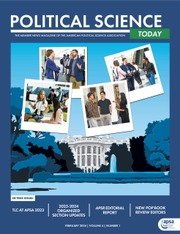EDITOR'S NOTE
This report is adapted from the full report presented to the APSA Council in spring 2020. The full report is available online here.
Scan to read the full report online!

BACKGROUND
The current editorial team took over the American Political Science Review on June 1, 2020. In the intervening months, we have continued and expanded upon the previous team’s achievements, especially their efforts to globalize the journal’s content, readership, and reach. We have also worked to maintain and improve the quality and integrity of the American Political Science Review, while broadening its readership, relevance, and contributor pool and expanding its commitment to research ethics.
With respect to the former goal (broadening the APSR’s readership, relevance, and contributor pool), we are committed to responding to the concerns voiced by many colleagues who feel that the APSR has historically been unreceptive to them and to their work. This group includes political scientists who ask questions that our discipline often elides and scholars who adopt approaches, epistemologies, and methods that fall outside what traditionally has been considered “mainstream.” At the same time, we are committed to ensuring that the journal remains the premier outlet for the kinds of scholarship for which it has for decades maintained a deserved reputation of excellence.
With respect to the latter goal (expanding the APSR’s commitment to research ethics), we are, to our knowledge, the first editorial team in the discipline to adopt and implement the American Political Science Association’s Principles and Guidance for Human Subjects Research, which the APSA Council adopted in April 2020.
We took on the challenges of putting these ethical principles into practice, and of representing the diversity of subfields, geographic areas of study, methods, and approaches that the broad and pluralistic discipline of political science encompasses, as our team began its term amidst a global pandemic. This report outlines the steps we have taken so far toward realizing our vision for the journal and highlights the most immediate remaining challenges. After introducing our team (section 2), we discuss the six principles that comprise our editorial vision and our progress toward realizing them (section 3). We then present various data, including data on submissions, turnaround times, and acceptance and rejection rates (section 4).
THE TEAM
Editors
Our editorial team is unprecedented in many ways. Although many political science journals—including the APSR—have had all-male editorial teams, few have had all-woman teams; nor have many had teams with the breadth of experience and expertise encompassed by ours. Seven members of our team have served as lead or associate editors of political science journals, and collectively, we have served on the editorial boards of more than 40 journals. Our methodological expertise ranges from GIS/geospatial analysis and formal models to participant observation, archival and historical research, and life history interviews. Team members have published work using mathematical models, quantitative methods, such as experiments, large-scale social media analysis, and cross-national data analysis, as well as work that uses small-n cross-regional analysis, ethnography, and poststructural methods, such as deconstruction. We also bring expertise in every subfield of the discipline, in nearly every region of the globe (including two regional experts in African politics), and in widely ranging domains of US politics.
In addition to our substantive and methodological breath and expertise, our team is also diverse along lines of race, ethnicity, and sexuality, and several of us bring research expertise in these areas to the table. As scholars who engage these topics in our research and who have also worked to increase equity and diversity in the profession and at our own institutions, we believe that our team is well situated to attract and critically evaluate the best work in these areas, in order to strengthen the APSR’s breadth, impact, and salience.
Managing Editor and Editorial Assistants
The APSA hired a full-time managing editor, Dragana Svraka, who assists with the day-to-day operations of the journal. Svraka received her PhD in political science from the University of Florida in 2020. She is currently based in Florida. However, when the Association’s offices re-open, she will move to DC and work from the APSA offices.
In addition, each of our team members is working with one or more editorial assistants, who are either PhD students or post-docs based at our home institutions.
Editorial Board
Our editorial board of just over 100 distinguished scholars includes some who served on the editorial board for the prior team and many new members. This board represents significant substantive (e.g., field and subfield), methodological, and representational (e.g., different types of institutions and different gender and racial identities) diversity.
Journal Governance
On our team, every editor is an equal member. There is no single “lead” editor, and no one person defines the journal’s direction. We have worked hard, collaboratively, to forge a shared approach and agenda for our team. Each member of our team participates in at least one weekly meeting, at which we discuss manuscripts and other day-to-day issues related to the journal. Each member also serves on at least one standing committee (described in detail below), and we meet as a group for multi-day meetings each spring and fall.
While we function as a collaborative team, our organizational structures and processes ensure clean lines of responsibility and accountability for every task, and for handling every manuscript and inquiry. To this end, we have developed a series of roles filled by a specific editor for a fixed term, and these roles rotate across the group over our editorship.
Specifically, we have designated two co-lead editors, who oversee the smooth running of the journal and ensure that no manuscripts fall through the cracks. One of these co-leads changes every six months. Our overlapping terms ensure continuity, while bringing fresh energy and new eyes to the lead position every six months. In additional to the lead editor role and the Governance Committee, we have four other special roles and three other committees. The special roles are: data specialist, ethics editor, social media editor, and appeals editor. The committees are: Data and Transparency (which includes our data specialist), Ethics and Inclusion (which includes our ethics editor), and Communications and Outreach (which includes our social media editor). Every editor serves on at least one committee.
OUR VISION
Six principles define our editorial vision. Below we describe each principle, discuss our approach toward realizing each, and highlight our progress thus far.
Editorial Transparency
Our decision-making processes aim to meet the highest standards of transparency with respect to key aspects of the editorial process. To that end, we collect and make public data about our workflow, as well as about the composition of our reviewer pool, readership, and submitting and published authors.
When we took over the editorship, we produced new, detailed FAQs, describing key aspects of our editorial process, including standards for decisions and information about our new appeals process. These and other policies are explained on our webpage. Our submission guidelines explain clearly what we expect of authors. We have published a number of blog posts about our aims and values, as well as about our editorial practices and policies. Our Notes from the Editors have included detailed discussions of our ethics policies and the effects of the COVID-19 pandemic on submissions, reviewing, and turn-around time. In addition, we hosted two panels at the 2020 APSA annual meeting to introduce the editors and our policies, one of which focused on our new ethics policies.
Checks and Balances
Checks and balances in our editorial decision-making practices promote fairness and consistency, while ensuring that the journal publishes the highest-quality original work. We have put several processes and policies in place to create checks and balances in decision-making:
• We have developed a common rubric to guide editorial decisions. The standards are available on our website under the description of our “peer review policy.”
• Our governance structure (with rotating leads and weekly meetings of all editors) ensures oversight of every editorial decision and prevents one person from dominating over the long term.
• We have developed a system of thorough pre-publication checks and safeguards to ensure the originality and validity of all published work, as well as compliance with standards for ethics and transparency.
• Our process for desk rejecting a manuscript requires at least two editors to agree that it should be desk rejected. If an editor’s proposal to desk reject is not seconded, but the editor but remains convinced the article should be rejected, the article is transferred to a different editor.
• We have developed and publicized a straightforward appeal process available to all authors submitting to the journal.
• We hold weekly meetings at which we discuss both new manuscripts and final decisions. These meetings help ensure that our review process provides for thoughtful consideration of, and deliberation about, submitted manuscripts.
• We seek appropriate reviewers for all submitted manuscripts that make it past the desk reject stage, taking care to invite reviewers with relevant substantive and methodological expertise.
• Our instructions to reviewers and policies about communicating with authors and reviewers emphasize the importance of respectful, appropriately professional, and constructive communication among editors, reviewers, and authors.
Commitment to Research Ethics
In implementing the third principle of our vision statement, we have focused on research that directly engages human participants and have adopted APSA’s Principles and Guidance for Human Subjects Research (approved by the Council in April 2020). To assist us in realize this part of our vision, seven members of our Editorial Board serve as our Advisory Board for Research Ethics (ABRE).
Our submission guidelines, FAQs, and submission interface all emphasize that authors submitting manuscripts based on research involving human participants must either affirm adherence to the principles, or if they claim an exception, provide a reasoned justification. We flag manuscripts that do not provide sufficient discussion of research ethics and send them back before considering them for review.
In our first 10 months, we returned about 16% of the submissions for clarification about ethical aspects of research procedures. In almost every case, the authors provided the needed clarifications quickly, and we then assigned their manuscripts to a team member to decide whether to desk reject on substantive grounds or to send for review.
In addition, we have implemented a policy that editors can desk reject manuscripts on ethical grounds. In our first 10 months, we desk rejected two papers for ethical reasons. In both cases, we communicated multiple times with the authors, making every effort to offer them the opportunity to address the ethical concerns surrounding their research.
We have also revised the journal’s reviewer instructions, so that they now ask reviewers to evaluate manuscripts’ research ethics.
Substantive, Methodological, and Representational Diversity
We are committed to increasing the range of research topics published in the APSR, while maintaining the journal’s profile in its traditional areas of excellence. By using the journal’s full page allocation, a practice that has not been adopted by recent editorial teams, we can broaden the range of questions and topics addressed in the journal without sacrificing attention to the sorts of work that the APSR has traditionally published.
One of the first steps we took in order to encourage a wider range of submissions was to build a large, representative Editorial Board, which reflects the diverse fields, subfields, methods, approaches, regional specializations, and identities that comprise APSA and the discipline. We ask Board members to help us reach out to our various constituencies to encourage submissions.
Other steps we have taken range from the symbolic (such as redesigning the journal cover) to the explicit (for example, openly signaling our aspiration to publish to a broad range of political science research through various communications, like our first “Notes from the Editors”).
The confounding effect of the COVID-19 pandemic makes it difficult to draw firm conclusions about whether these measures have helped increase the diversity of submissions. (For details, see the next section of the report, in which we present data about submissions.)
Active Engagement with the APSA Membership
When we first articulated the principles that define our editorial vision, we noted that active engagement with the APSA membership would help us promote the journal, connect with scholars, in order to understand their priorities and concerns, and increase substantive, methodological, and representational diversity.
To this end, we planned to attend a wide variety of research section and caucus meetings at the 2020 APSA meeting and to attend regional and subfield conferences throughout the year, as well. The pandemic upended these plans during this first year, although we are engaging a more modest outreach plan though virtual conference attendance.
In addition, we hosted two panels at the 2020 APSA Annual Meeting, a “Meet the Editors” panel and a panel on research ethics. Two of our editors participated in an additional panel entitled “Reflections on Editing Journals,” featuring editors of several journals. We will be similarly active at APSA 2021, hosting two panels of our own and participating on a third.
Modernizing the Journal’s Communications and Promulgating Articles More Widely
We have also begun to modernize the journal’s approach to communications, aiming both to raise the public profile of the journal and to improve the visibility of, and readers’ access to, the work we publish. One of our first changes was to leverage social media by adding Twitter and Facebook accounts for the journal on June 1, 2020. We garnered over 1,000 Twitter followers our first day online, and we had about 5,500 by early spring, 2021. We tweet regularly, particularly to draw attention to the excellent work we are publishing. Follow us at www.twitter.com/apsrjournal.
We have facilitated blog posts featuring our authors’ research and have begun providing ungated early access to articles. The team plans to produce roughly one editors’ blog post each month, and one author’s blog post each month. We have also introduced an interview format blog, featuring conversations with our authors.
We also featured two virtual special collections. One celebrated International Women’s Day and was guest-curated by Peace Medie, Another examined the Crisis of American Democracy, following the attack on the US Capitol, and featured articles from all of APSA’s journals.
In addition, we have overhauled the journal’s website and redesigned its cover, which is colorful and features a new image with each issue.
Authors have also increasingly opted to facilitate open access to their research. We look forward to working with APSA to support the upward trend in open access, which we anticipate will further strengthen the journal’s profile and help our authors to reach wider audiences, including those outside of the academy.
SUBMISSIONS, EDITORIAL DECISIONS, AND OTHER DATA
Overview of Submissions Data
Overall, the APSR’s submissions have been trending upward for the last several years (figure 1). Manuscript submissions particularly increased in our team’s first 10 months, compared with the last year of the prior team (figure 2). We received an especially large bump in new manuscripts during our first few months: between June 1 and August 30 of 2020, we received a total of 468 manuscripts, compared with 265 manuscripts in the same period for 2019, an increase of about 200 manuscripts (data from Editorial Manager). The large jump in submissions during the first several months of our tenure lifted the journal to a record number of new submissions by the end of the calendar year.
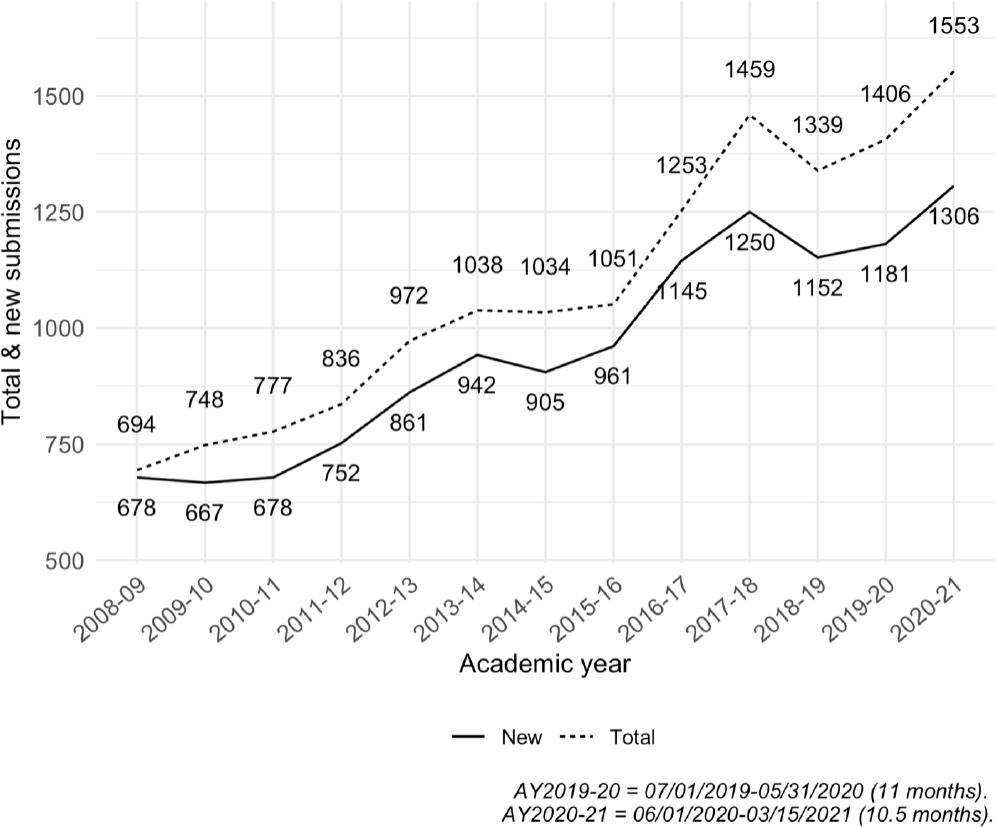
Figure 1 Total and New Submissions, 2008–2020 Academic Years
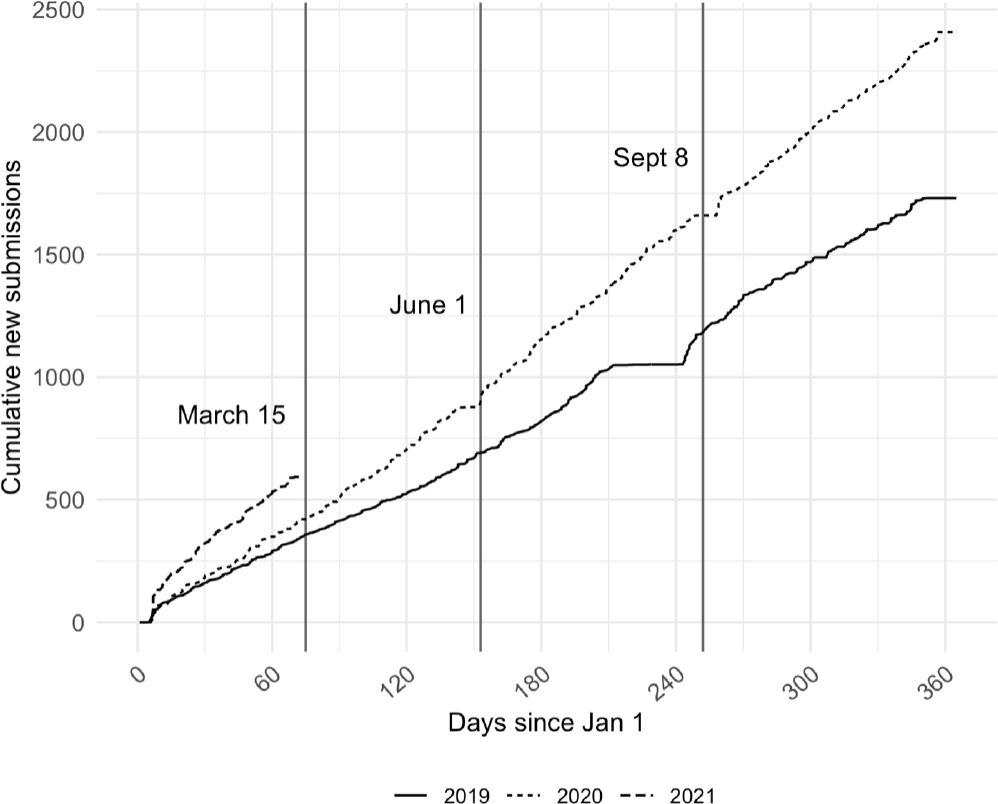
Figure 2 Cumulative New Submissions by Calendar Year, 2019–2021
The proportion of manuscripts submitted as letters also continues to increase (figure 3).
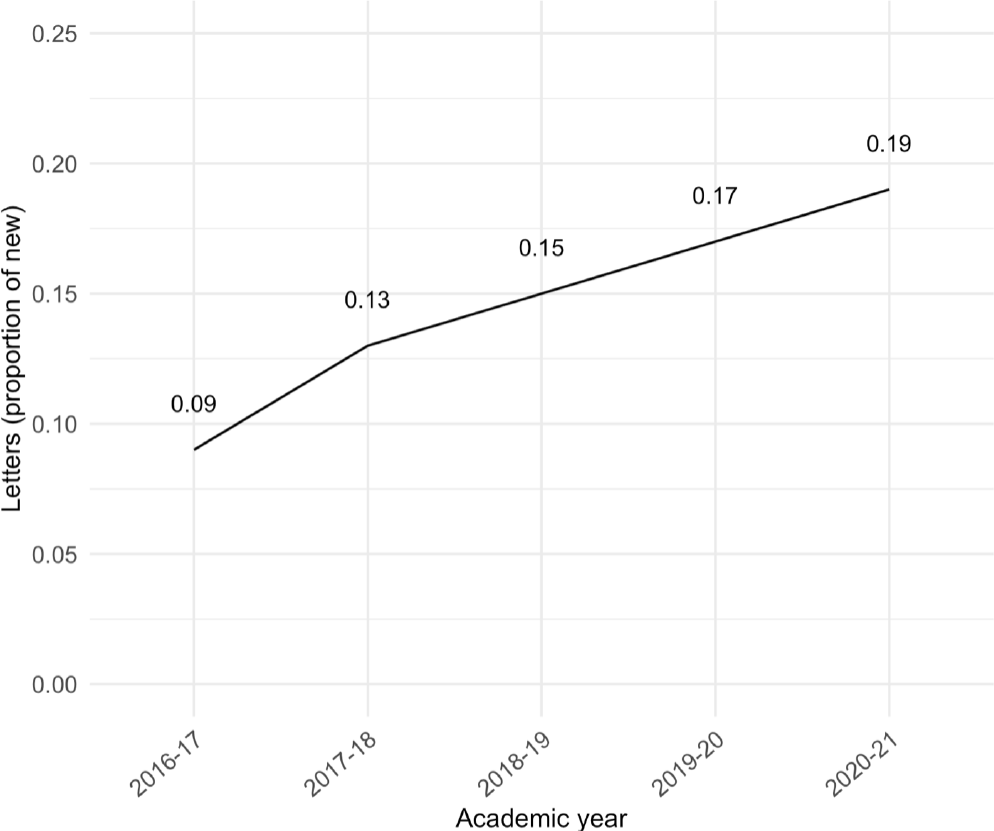
Figure 3 Letters as Proportion of New Submissions by Academic Year, 2016–2021
Turnaround Times and Aggregate Acceptance/Rejection Rates
In spite of these increases, and in spite of being new editors, our turnaround times are comparable to or better than those of the prior year (table 1).
Table 1 Workflow/Turnaround Times, 2008–2021

Since many of the manuscripts that were first submitted under our team have not yet gone through the whole review process, it is difficult to compare the distribution of final decisions and turnaround times for this part of the review process. The distribution of times for reject and revise and resubmit after peer review shown in figures 4 and 5 do not include those manuscripts still with our reviewers.
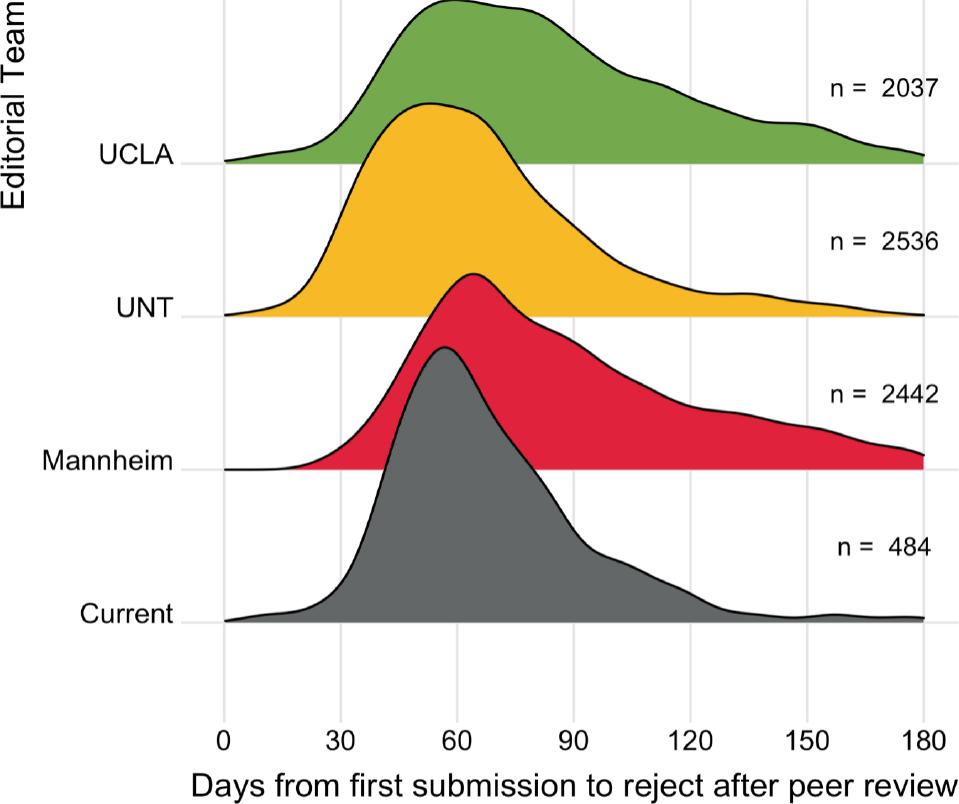
Figure 4 Days from First Submission to Reject After Peer Review, 2008–2021
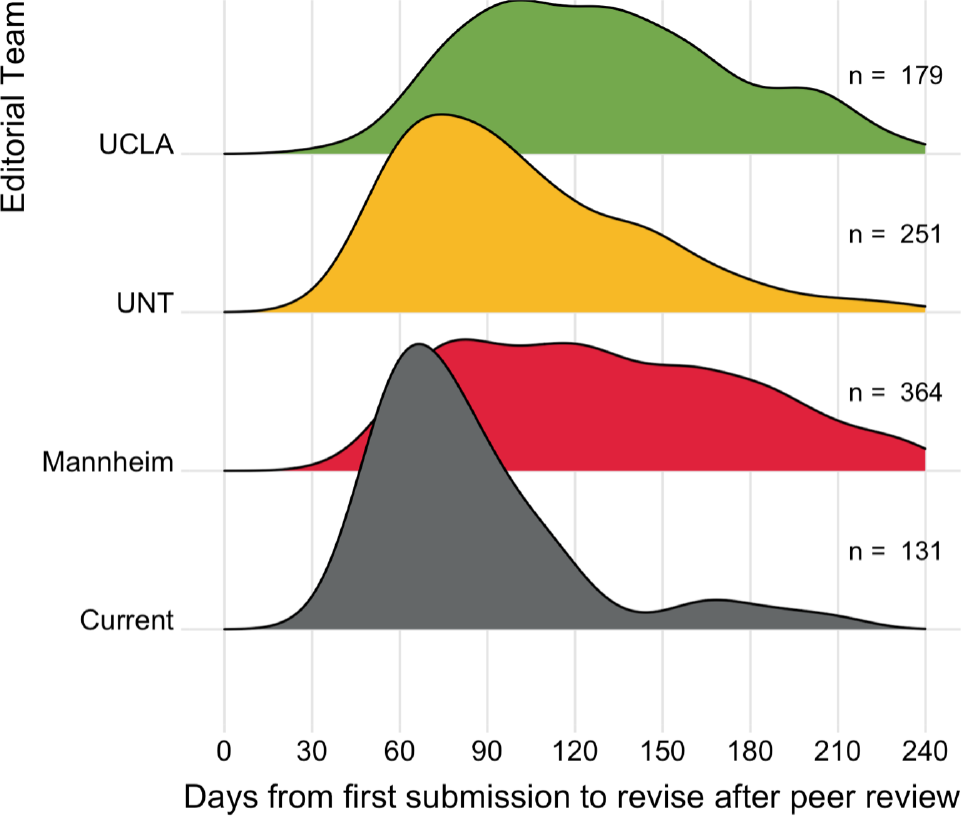
Figure 5 Days from First Submission to Invitation to Revise and Resubmit, 2008–2021
Figure 4 shows days from first submission to reject after peer review for our team and the three teams that preceded us. Figure 5 shows days from first submission to revise after peer review. Both figures 4 and 5 include only manuscripts with completed decisions.
By contrast, the turnaround time between an initial new submission and the first invitation to review (figure 6) or the desk reject decision (figure 7) are easy to compare. Our turnaround times are similar to those of the three previous editorial teams.
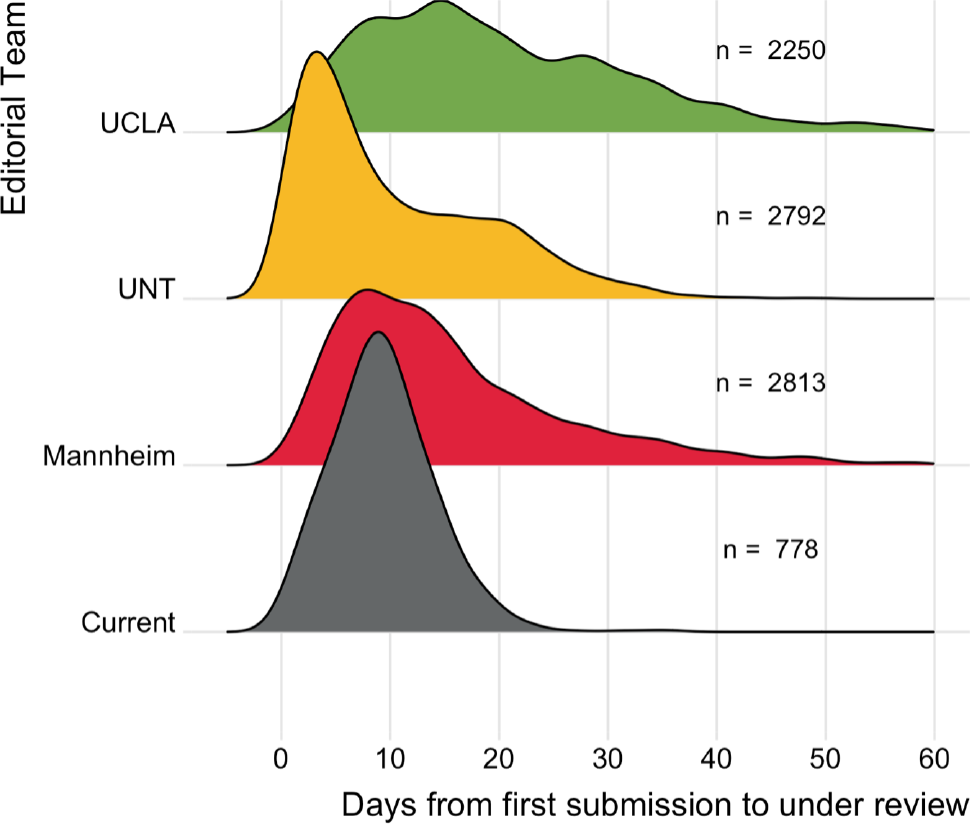
Figure 6 Days from First Submission to Under Review, 2008–2021
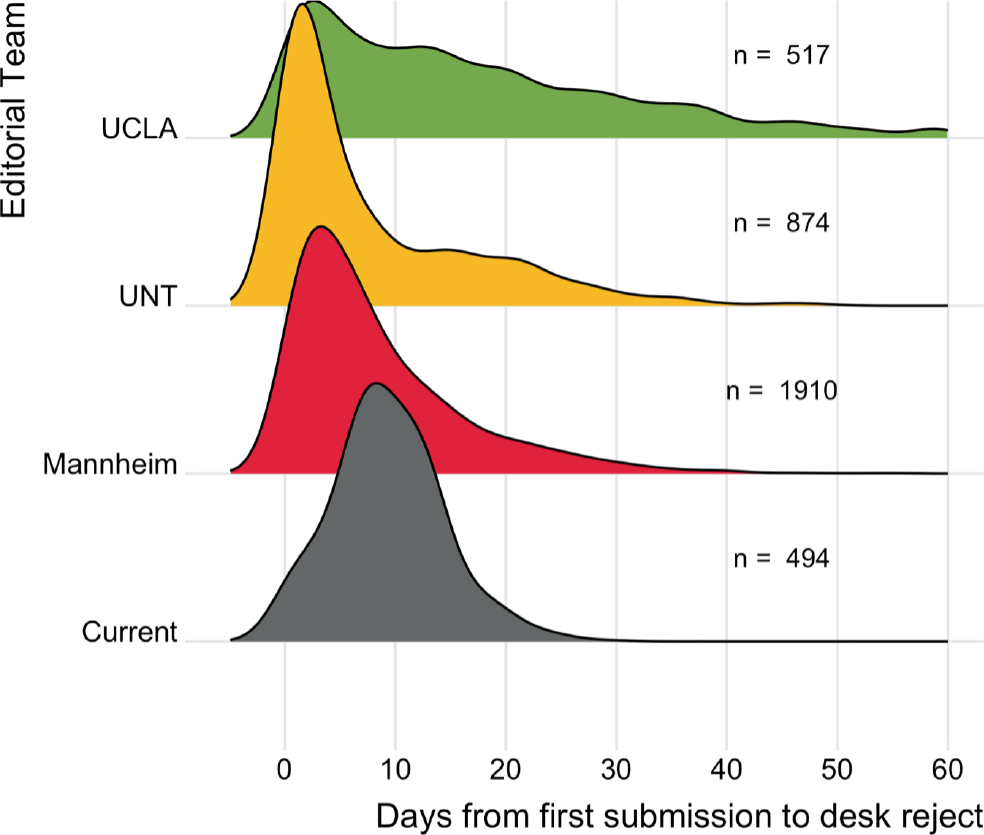
Figure 7 Days from First Submission to Desk Reject
Our editorial team’s overall rates of desk rejection are also fairly similar to the prior team, but higher than the UNT and the UCLA team’s desk reject rates (table 2).
Table 2 Editorial Decisions, All New Manuscripts, 2008–2021

Submissions and Acceptances by Subfield and Method
The online submission interface asks corresponding authors to answer two questions about a manuscript’s primary subfield. One is a required field called “section” (referring to organized APSA section), and the other is open ended and was added to the submission questionnaire in January 2018. Based on both of these indicators, the largest proportion of submissions and accepted articles under past teams has been in the comparative subfield, with the second largest subfield category being American (tables 3–6).
Table 3 New Submissions by Editorial Manager Section and Editorial Team, 2008–2021

Note: These categorizations are chosen by the corresponding author at the time of submission.
Regarding accepted articles, we note that many of the articles that our team has accepted so far were submitted and sent out under the prior team (tables 4 and 6). Nevertheless, a few changes are worth noting. The proportion of accepted articles that focus on Race, Ethnicity and Politics, just over 9%, is the largest proportion today (table 4). In addition, the proportion of accepted manuscripts in IR is now close to 11%, up from just under 6% under the previous team and closer to the historical representation of the field in the journal (tables 4 and 6).
Table 4 Accepted Manuscripts by Editorial Manager Section and Editorial Team Making Final Decision

Note: These categorizations are chosen by the corresponding author at the time of submission.
Table 5 New Submissions by Subfield and Editorial Team, 2018–2021

Note: These categorizations are chosen by the corresponding author using submission questionnaire approved by APSA Council, January 2018. N/As are omitted. Also excludes those manuscripts still under review.
Table 6 Accepted Manuscripts by Subfield and Editorial Team Making Final Decision, 2018–2021

Note: These categorizations are chosen by the corresponding author using submission questionnaire approved by APSA Council, January 2018. N/As are omitted. Also excludes those manuscripts still under review.
Also worth noting is that, although examining the category for normative political theory defined as a section suggests that acceptances in that subfield are down (table 4), according to subfield classification in the author questionnaire, political theory acceptances are up from 10% to nearly 15% (table 6).
The submission questionnaire implemented in 2018 also asks corresponding authors to identify the primary methodological approach of their submission. Tables 7 and 8 report submissions and accepted manuscripts according to this classification. Shifts in patterns of submissions are modest so far, with a slight increase in manuscripts using experimental methods, and a decrease in those using formal models (table 7). The proportions of accepted articles in a number of methodological categories, including interpretative and small N, are up under our team, with only the formal and statistical-observational methodologies slightly decreasing (table 8).
Table 7 New Submissions by Method and Editorial Team

Note: These categorizations are chosen by the corresponding author using submission questionnaire approved by APSA Council, January 2018. N/As are omitted.
Table 8 Accepted Manuscripts by Methodology and Editorial Team Making Final Decision

Note: These categorizations are chosen by the corresponding author using submission questionnaire approved by APSA Council, January 2018. N/As are omitted. Also excludes those manuscripts still under review.
SUBMISSIONS BY AUTHORS’ GENDER, ETHNICITY, AND RACE
Since 2018, all authors of a manuscript submitted to the APSR are asked to report their gender and racial/ethnic identities, allowing us to examine submission patterns by gender and race/ethnicity. Figure 8 shows the distribution of authors who report binary gender identities. In multiauthor teams, if at least one author identified as female and one identifies as male, the team is coded as mixed gender, regardless of whether other authors answered the gender identity question.

Figure 8 New Submissions by Gender (%)
Comparing our team with the Mannheim team, we note an increase in solo female, female team, and mixed team submissions, which may be surprising, given reports from other journal editors of a decrease in submissions by women over the course of the COVID-19 pandemic. (For an in-depth analysis of gendered and other patterns in light of the pandemic see our third “Notes from the Editors,” in the May 2021 issue).
Figure 9 shows the distribution of authors’ self-identified race or ethnicity. Specifically, it shows whether authors identify as white or Black, Indigenous, or another racial identity and, in the case of teams, whether at least one, but not all, authors identify is BIPOC (1+BIPOC). Comparing our team with the Mannheim team, we note a slight increase in solo BIPOC, BIPOC team, and 1+BIPOC submissions.
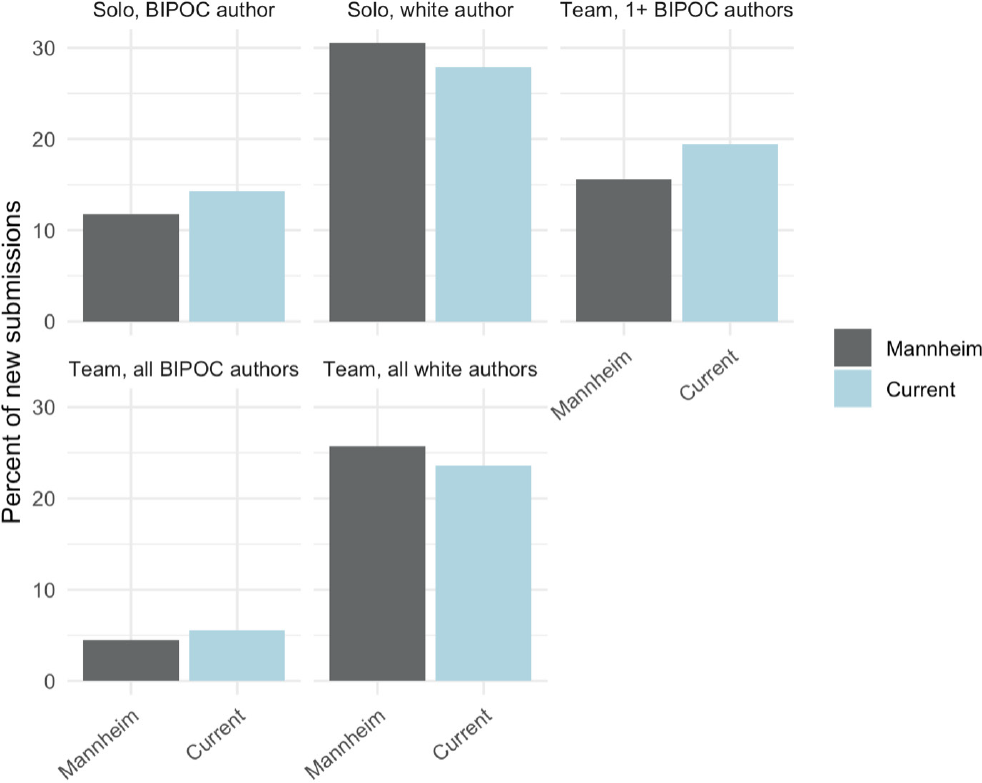
Figure 9 New Submissions by Race and Ethnicity (%)
CONCLUSION
In our first 10 months of stewardship of the APSR, we have developed and implemented policies that aim to promote the principles we articulated in our initial proposal to serve as editors: editorial transparency; editorial checks and balances; a commitment to research ethics; substantive, methodological, and representational diversity; active engagement with the APSA membership; and modernizing the journal’s communications.
We operate as a cohesive, collaborative, and effective team, and we are excited about what we have accomplished, even as we recognize that we still have far to go. ■
